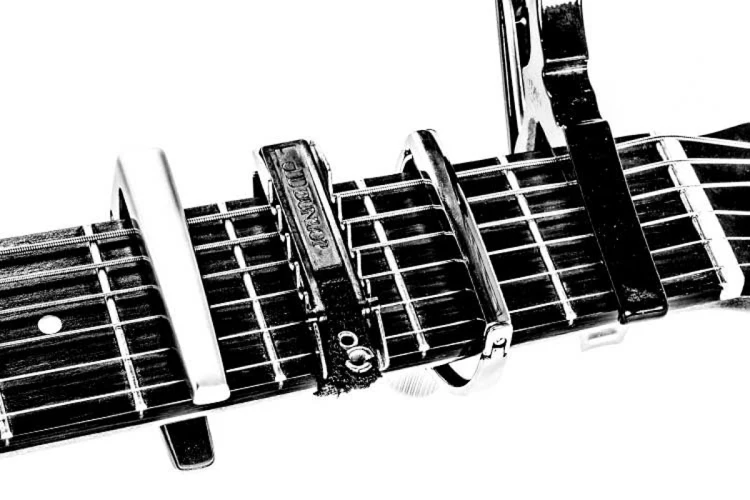If you’re a guitar player, you’ve probably heard of a capo before. A capo is a device that clamps down on the fretboard of a guitar, effectively shortening the length of the strings and raising the pitch of the open strings. Capos can be a useful tool for guitarists of all skill levels, but they also have their limitations. In this article, we’ll take a look at the different types of capos available, as well as their pros and cons.
Spring Capos
Spring capos are the most common type of capo. They consist of a bar with a spring-loaded clamp that attaches to the guitar’s neck. To use a spring capo, you simply squeeze the clamp and place it over the desired fret. Spring capos are easy to use and can be quickly moved up and down the fretboard. However, they can also be prone to putting uneven pressure on the strings, which can lead to tuning issues.
Shubb Capos
Shubb capos are a type of screw-operated capo. Instead of a spring, they use a screw to apply pressure to the strings. This allows for more precise tuning and less chance of string buzz. Shubb capos are also less likely to cause tuning issues than spring capos. However, they can be a bit more difficult to use, as you have to manually tighten the screw to apply pressure.
Trigger Capos
Trigger capos, also known as partial capos, clamp down on only a few strings at a time. This allows guitarists to play chords in different keys without having to re-tune the entire guitar. Trigger capos are easy to use and can be quickly moved up and down the fretboard. However, they can be more expensive than other types of capos and may not be suitable for all playing styles.
Roller Capos
Roller capos are a type of capo that uses a rolling mechanism to clamp down on the strings. This allows for smooth and easy movement up and down the fretboard. Roller capos are also less likely to cause tuning issues than spring capos. However, they can be more expensive than other types of capos and may not be as widely available.
Pros of using a capo
* Capos make it easy to change the key of a song without having to re-tune the entire guitar.
* Capos can be used to create unique and interesting chord voicings.
* Capos can make it easier to play certain songs, especially those with difficult fingerings.
* Capos can be used to create a “chorus” effect by raising the pitch of the open strings.
Cons of using a capo
* Capos can cause tuning issues if not used properly.
* Capos can make it difficult to play certain techniques, such as bends and slides.
* Capos can be expensive, especially high-end models.
* Capos can be bulky and may not fit in some guitar cases.
Interested in learning more about different aspects of country music guitars? Check out our articles on country music guitars pros and cons, koa acoustic guitars pros and cons, country strumming patterns, alt-country tunings, and acoustic vs electric pros and cons for country guitars for a deeper insight into the world of country music and guitars!
Conclusion
Capos can be a useful tool for guitarists of all skill levels. They make it easy to change the key of a song and can be used to create unique and interesting chord voicings. However, capos also have their limitations. They can cause tuning issues if not used properly, and they can make it difficult to play certain techniques. Additionally, capos can be expensive and may not fit in some guitar cases. When choosing a capo, it’s important to consider the type of capo, the material it’s made of, and the price. Ultimately, the best capo for you will depend on your individual playing style and needs.

